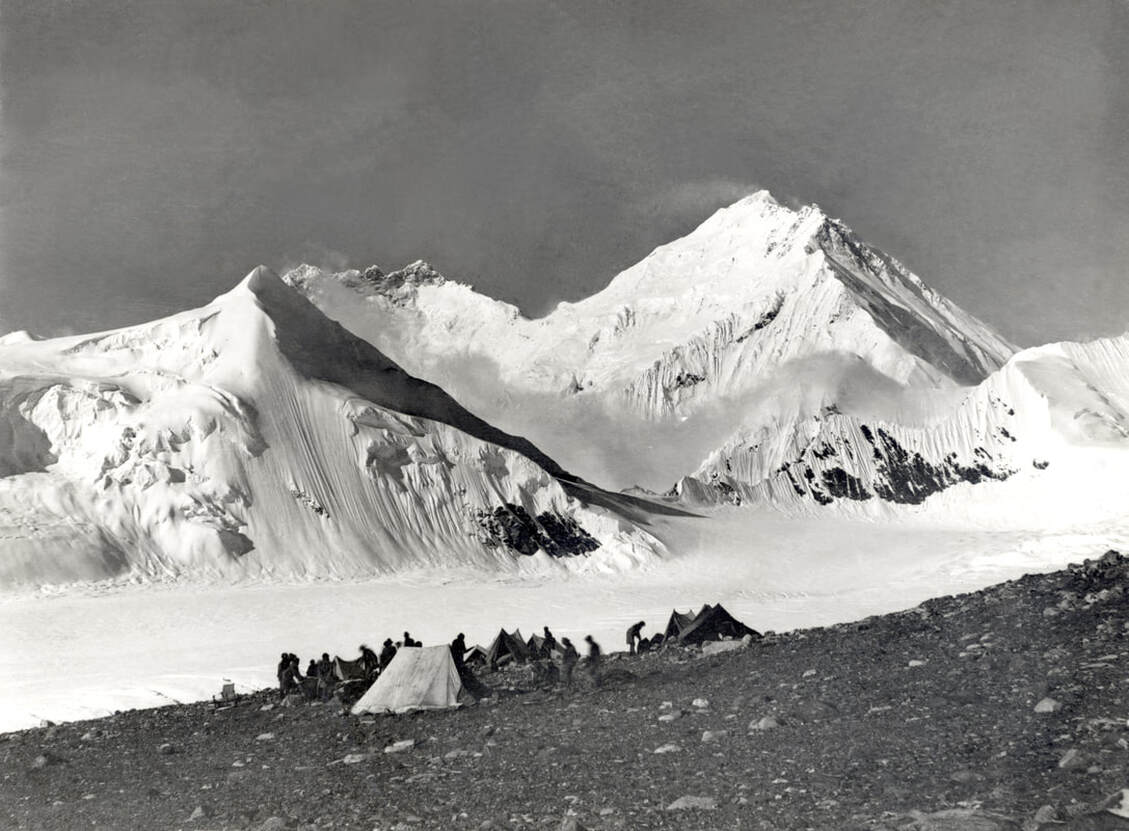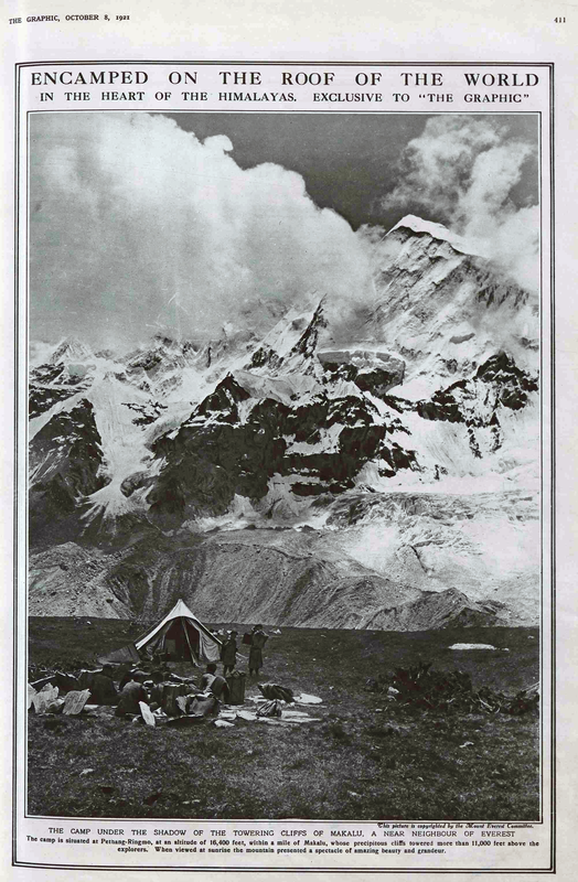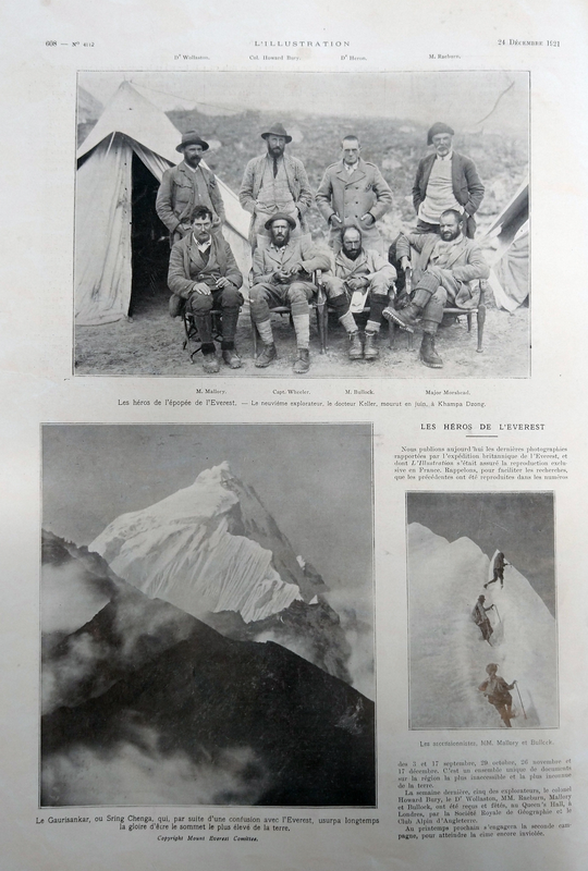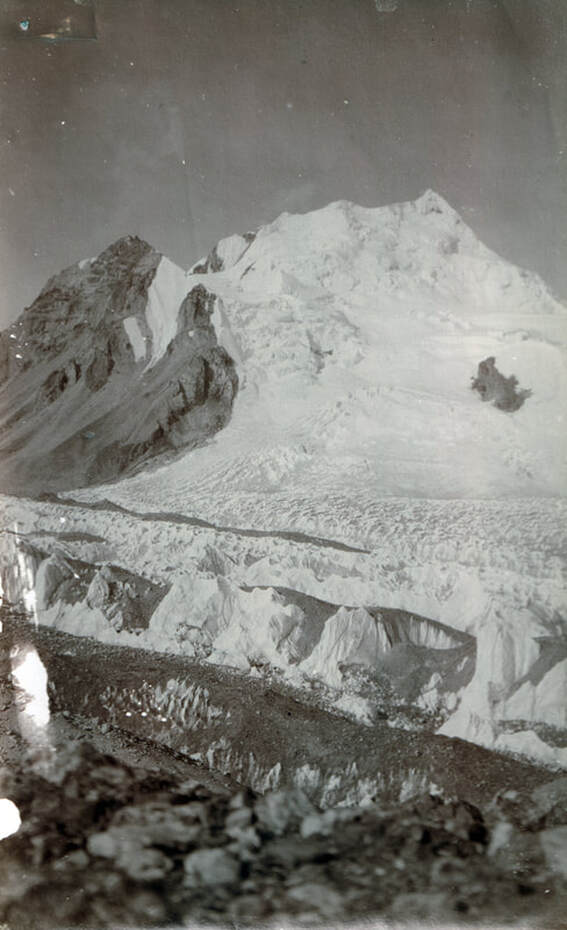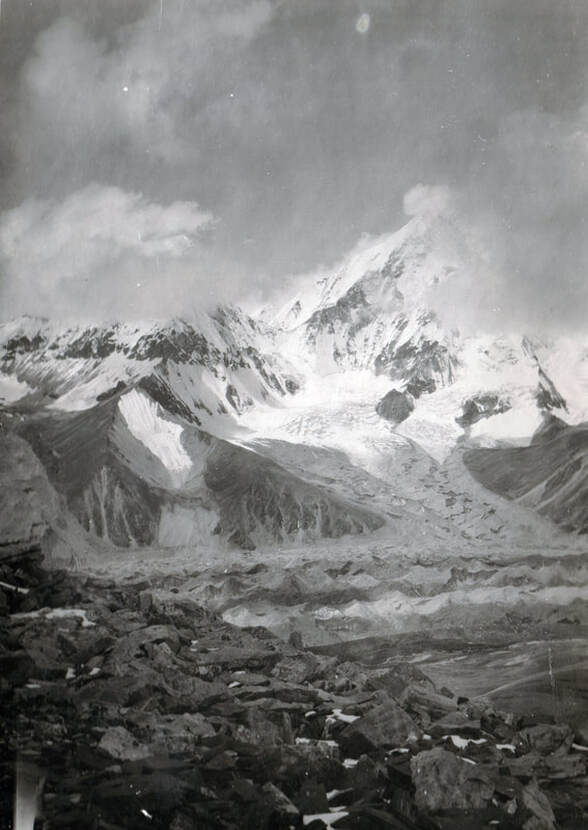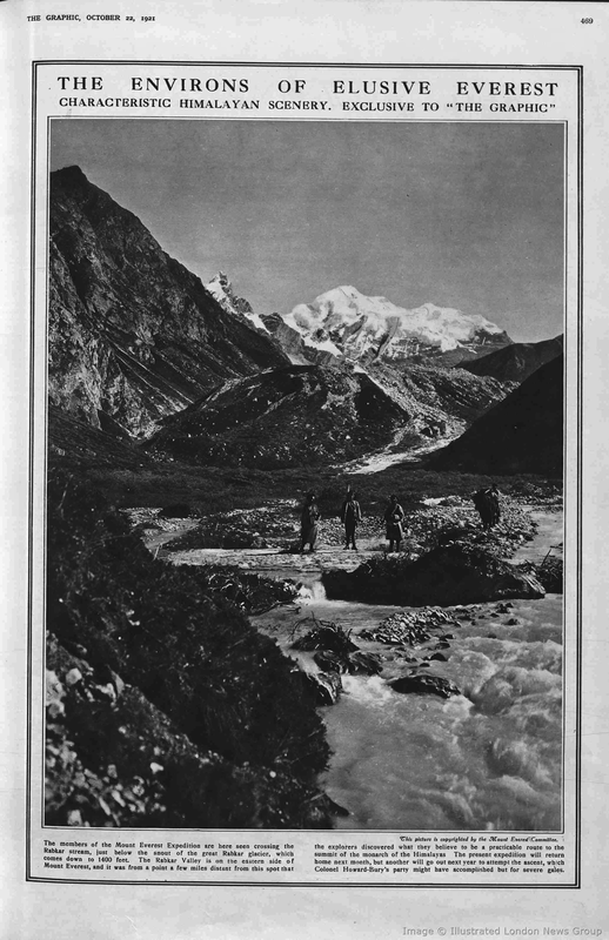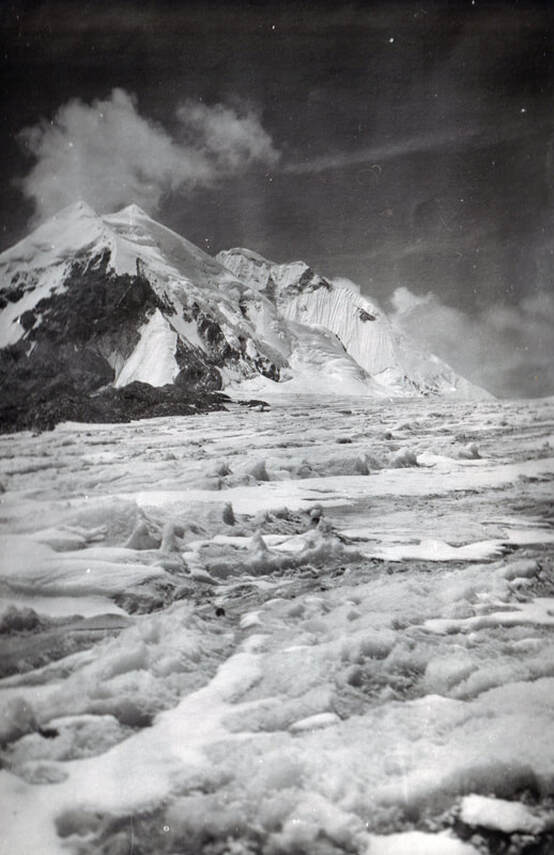Coming Back to Earth
After completing its mission, the weary reconnaissance team began the
return journey to their base in Darjeeling. They would eventually make their way
back to Europe, discovering along the way that they had become international celebrities.
return journey to their base in Darjeeling. They would eventually make their way
back to Europe, discovering along the way that they had become international celebrities.
By the end of October the climate was beginning to get very cold, the thermometer descending at times to Zero Fahrenheit, so that we were quite ready to leave the country, being anxious to get warm again, if only for a short time. There was sorrow in our hearts, however, at parting with the friendly and hospitable folk whom we had encountered, and at leaving behind us the familiar landscapes with the transparent pale blue atmosphere that is so hard to describe, and the distant views of range upon range of snowy mountains often reflected in the calm waters of some blue coloured lake. The attractions of Tibet may yet be strong enough to draw us back again once more. Many years ago the same attraction impelled me to cross the Himalayan mountains and to visit another part of Tibet, but my excursion was, I am afraid, not favourably regarded by the Indian Government and my leave was stopped for six months. The same attraction, however, still exists for this land of many colours with its lonely sunsets full of beauty, with its nights where the eager stars gleam bright as diamonds, and where the full moon shines upon the nameless mountains covered with snow and still as death.
Howard-Bury describes the party's departure from Tibet in autumn 1921
Frank Nugent discusses Howard-Bury's performance as expedition leader
The return journey: October 1921
|
The expedition departed its base at Kharta on 5 October 1921, heading for Khamba Dzong. On the way, they stopped at the village of Linga. Howard-Bury described its villagers as engaging in a mix of hard work and heavy drinking: 'We found the people at Lingga busy thrashing. The thrashing time in Tibet is a favourite one for drinking, and often the whole village after a day's harvest will be completely incapacitated as the result of too great an indulgence in chang [a Tibetan barley wine, although with an alcohol content closer to beer]. Their thrashing floors consist of an area of about half an acre of hard beaten earth on which the barley is spread to a depth of 6 to 8 inches. Fifty or sixty yaks are then driven into this enclosure, followed by thirty people or more, beating drums, rattling kerosene oil tins, ringing bells and shouting and yelling in order to frighten the yaks, who, tail in air, are driven backwards and forwards over the barley. This they continue doing until every one is tired and hoarse, when the whole of the workers, both male and female, adjourn for a long drink of beer, after which the same process is repeated.'
The expedition reached Khamba Dzong on 11 October. The journey thereafter was relatively uneventful, although the team was discomfited by the weather which got colder by the day, with regular heavy snow showers and a cold 'everlasting' wind, which caused Howard-Bury to look forward 'to finding ourselves inside once more and sitting in front of a fire'. That wish was granted a few days later at the trading town of Phari, where the team found a bungalow and was 'able to spend a very comfortable and pleasant evening reading our letters and papers in front of a fire which, though still mostly yak dung, was in a fireplace'. The team departed Phari on, or around, 17 October. Although Howard-Bury would miss Tibet, he was less enraptured with Phari and its hinterland: 'When we turned our backs on Phari and started to march down the Chumbi Valley, we had left the real Tibet behind us. I could not somehow look upon the Chumbi Valley as being a part of Tibet. Its characteristics, its houses, its people, its vegetation, are all so different from the greater part of Tibet. There are not the same cold winds that freeze the very marrow, nor are there the wide plains and the undulating hills with their extensive views.' The expedition passed once more through the Jelep La and then made its way to Darjeeling, which was reached on 25 October 1921. The Everest reconnaissance mission was complete. |
Everest as seen from the '20,000 feet camp' (almost 6,100 metres).
The photo was taken by George Mallory in September 1921, shortly before the expedition team began the journey back to Darjeeling.
(Alpine Club Photo Library, London)
The photo was taken by George Mallory in September 1921, shortly before the expedition team began the journey back to Darjeeling.
(Alpine Club Photo Library, London)
The legacy of the 1921 reconnaissance mission is discussed by Frank Nugent
|
A page from the Graphic, a weekly English illustrated newspaper, 8 October 1921. In the background is the mountain, Makalu. Located about 20 kilometres south-east of Everest, it is the fifth highest mountain in the world.
|
The reconnaissance mission was an international story. The above page is from an article in the French weekly magazine L'Illustration, dated 24 December 1921. L'Illustration closely followed the reconnaissance team's progress, printing numerous reports and photos. An original copy of that edition is held in Mullingar Public Library's Howard-Bury Collection.
|
Scenes from the 1921 Expedition (Marian Keaney/Westmeath Library Services: Howard-Bury Collection)
In 1922, Howard-Bury was awarded the Founder's Medal by the Royal Geographical Society
for 'his distinguished services in command of the Mount Everest Expedition'
for 'his distinguished services in command of the Mount Everest Expedition'
